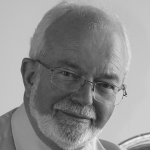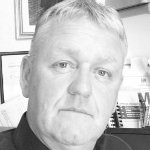Programme
-
Registration and networking
-
Opening remarks from the chairman
- Understanding the key drivers behind site investigation works
-
Keynote Rethinking site investigation
The ground is the greatest unknown in all construction projects so knowledge of its characteristics is key to efficiency, sustainability and safety of design and construction. The ground and structure interact so the scope and form of site investigation needs to match the structure’s specification and objectives. Clients, Engineers and Funders need to recognise this and to re-think the nature, structure, practice, procurement and product of site investigation to encourage quality from and for experienced professionals. Structures are specified; the ground is inherited, so collaboration between designers and investigators is essential to balance needs, practicalities and programme to provide value for the completed project.
The techniques used within the site investigation industry have many experienced practitioners and their knowledge is essential to optimise investigation design in the context of the site geology, access constraints and information required. Site Investigation is site-specific R&D and a process that extends from initial concepts, through phased investigation work and monitoring through construction to project completion and beyond, providing essential data for efficient use by experienced designers. Adoption of the AGS Format for data transfer, assimilation and storage allows better and more rapid use of all the data; awareness of this innovation is vital to progress.
-
The changing shape of the contaminated land industry - what will Brexit bring?
- The impact of ongoing uncertainty resulting from negotiations with the EU on the terms of withdrawal and future relationship
- The impact of Brexit on the UK’s membership of EU agencies
- The challenges faced by the sector in times of uncertainty
- Funding and investment in times of change - will there be a desire to start future developments?
-
Phase 2 development of C4SLs - progress so far
- Background to the project
- Who is involved;
- Progress so far
-
-
Question and answers
-
Morning refreshments and networking
- Building site data and maximising its potential
-
Developing comprehensive conceptual site models
-
Conceptual Ground Modelling - new approaches from the BGS
- From conceptual to observational ground models
- Data services from BGS – live demonstration
- Case studies from the construction and water sector
-
Applying BIM principles to geotechnical data management
- Placing a greater focus on site investigation work and desk studies
- Providing a platform that enables potential risks to be acted upon quickly
- Developing a sounder understanding of ground conditions and how this leads to improved design
- Improving communications and developing a co-ordinated approach with all sectors involved
-
Questions and Answers
-
Lunch and networking
-
Welcome back
- Assessing the risks
-
The importance of air quality and how it’s affecting the remediation sector
- Understanding the critical role land-use planning can play in improving local air quality
- Site monitoring protocols and air quality monitoring techniques, when these should be applied
-
The analysis of asbestos in soil and C&D materials - what’s in a number?
This presentation will specifically focus on what industry – laboratories and consultants – need to do in order to ensure high quality fit-for-purpose analytical data is produced that may then be used in order to make confident and robust decisions on risk assessment and remediation.
 Steve Forster
Director, Remedia Group Limited & Chair, Joint Industry Working Group on Asbestos in Soil and C&D Materials
Steve Forster
Director, Remedia Group Limited & Chair, Joint Industry Working Group on Asbestos in Soil and C&D Materials -
Understanding the threat of UXO’s
- Identifying the potential risk from UXO through desktop and geo-physical assessment – exploring likely historical sources, locations and depths across the UK
- Outlining advances in appropriate risk mitigation measures – both before and after removal
- Safely removing the unexploded ordnance with minimal cost and disruption
-
Questions and Answers
-
Afternoon refreshments and networking
- Innovation and technology
-
Utilising digital data
-
The effective use of digital technology within a remediation site
-
TBC
-
Questions and Answers
-
Closing remarks from the chairman
-
Event close












